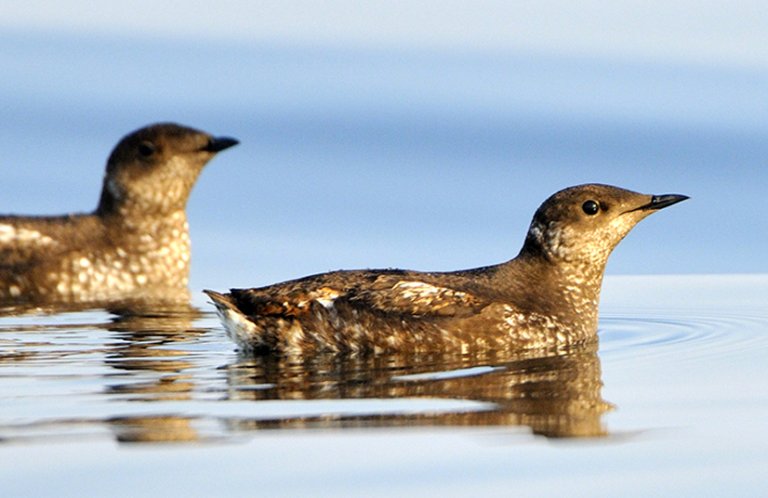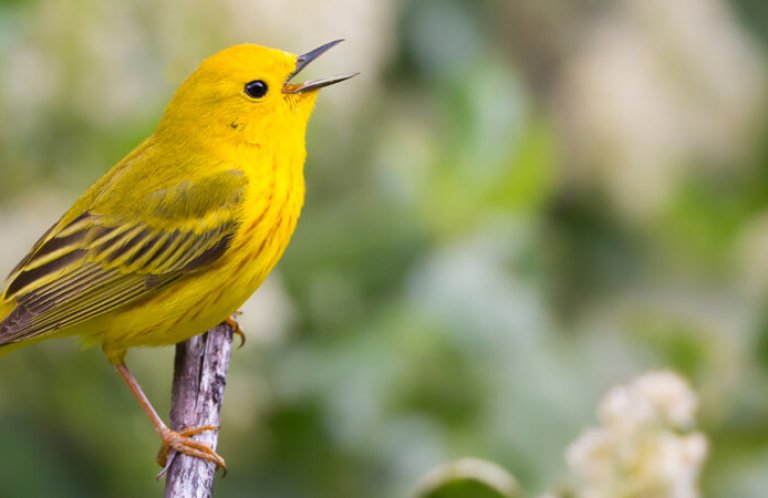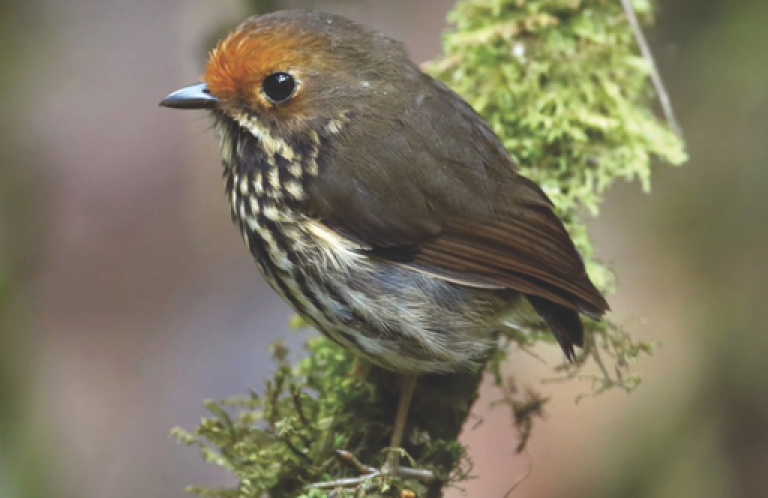Nests of Rare South American Birds
In South America, the nests and breeding behavior of many secretive species remain shrouded in mystery. This offers exciting opportunities for ornithologists and birders to fill in knowledge gaps. In recent years, a few individual researchers, like Harold Greeney in Ecuador and Gustavo Londoño in Colombia and Peru, have made out-sized contributions, describing numerous species' “first” nests and other breeding behaviors, but much remains to be learned about how many Neotropical birds nest and raise their young. As you'll see here, for some of the rarest species, such information is already proving invaluable in conservation efforts aimed at preventing extinctions. Keep scrolling to learn about a mysterious North American nest only discovered in 1974.
Blue-throated Macaw
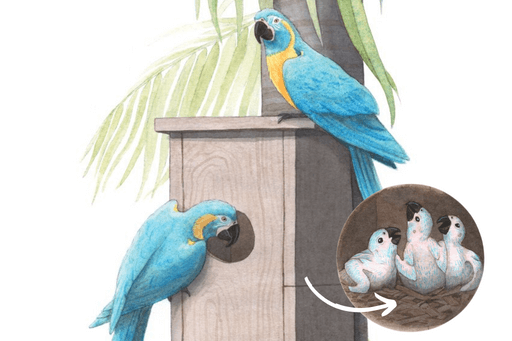
Nest boxes can be important conservation tools in areas where natural nest sites are limited, and ABC actively supports several South American partners' efforts to provide them. For example, ABC's partner Asociación Armonía in Bolivia has mastered the design of artificial nest boxes for Critically Endangered Blue-throated Macaws in the southern Beni region, fledging 105 birds since 2005 — representing about 25 percent of the wild population. Armonía is also working on nest box designs that might entice these macaws to nest in the northern Beni at Barba Azul Reserve. ABC supported the nest-box programs and land acquisition at the two key reserves for this species.
Elsewhere in South America, nest box programs helped boost numbers of other species, including the Endangered El Oro Parakeet at Buenaventura Reserve in Ecuador and the Endangered Gray-breasted Parakeet in the Baturité Mountains of Brazil. In the latter case, the population grew enough that in May 2022, a dozen Gray-breasted Parakeets were reintroduced, along with nest boxes, at a forested area in a nearby mountain range.
Araripe Manakin
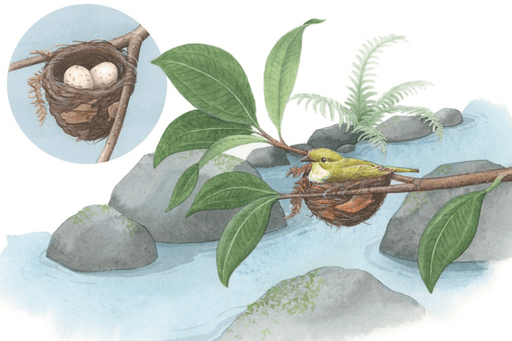
The Critically Endangered Araripe Manakin usually builds its shallow cup-nest structure in the fork of a small horizontal branch — just a few feet above running water. This special nesting behavior means that we must make it a priority to protect streamside habitat for this extremely rare bird on the otherwise-arid Araripe Escarpment in northeastern Brazil.
ABC's partner Aquasis is planting the native shrub species that offer fruit and preferred nesting sites for these birds, enhancing manakin habitat within the Oasis Araripe Reserve. Aquasis is also experimenting with extending artificial channels from springs to create additional streams in hopes of boosting manakin breeding options.
ABC supports this work, and also helped Aquasis with land acquisition, establishment of a nursery for the reforestation work, and reserve infrastructure efforts.
Pale-headed Brushfinch
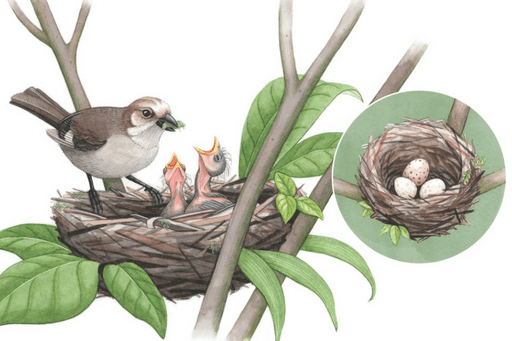
Understanding the breeding behavior of the Endangered Pale-headed Brushfinch was key to increasing this bird's population from five to 15 pairs in 1998 to about 240 individuals (112 territories) in 2021.
After purchasing, with ABC support, some of the last habitat remnants where this species survived to create Yunguilla Reserve, Fundación de Conservación Jocotoco discovered many nests failed due to brood parasitism by Shiny Cowbirds. After controlling cowbirds around the reserve, reproductive success improved and the population increased.
Now, cowbird control is not necessary because the two species no longer nest in sync, as earlier rice harvests, likely due to climate change, create a food bounty that spurs earlier nesting for the cowbirds.
Marvelous Spatuletail

Male Marvelous Spatuletail hummingbirds put on dramatic displays to attract mates, but once this show is over, the female does all the work to build a nest, lay eggs, and rear young. This behavior is typical of hummingbirds, as is this species' nest: It's a compact open cup made of fine materials, with an exterior decorated with lichen as camouflage.
With ABC's support, our partner Asociación Ecosistemas Andinos (ECOAN) has worked to restore and protect habitat for this Endangered species at and around Huembo Reserve in northern Peru. There, profits from ecotourism help sustain reserve management, while feeding stations and garden flowers provide great opportunities for visitors to observe and photograph this species.
Alagoas Antwren

The Critically Endangered Alagoas Antwren is a species on the brink of extinction, with fewer than 20 individuals surviving in a single forest fragment of less than 5,000 acres, in the Murici Ecological Station, Brazil. The first nest was documented in 2018 and only three others have been found since — cup nests fixed to thin branch forks and made of black fungal threads, with bits of dead leaf attached on the outside.
With so few individuals remaining in such a small area, boosting breeding success is critical to averting extinction. ABC and partners SAVE Brasil and Instituto Claravis have worked in the reserve to find the last few nests of these birds, as well as those of other species, to study which animals prey on eggs and nestlings. Armed with this information, we can take actions to help the Alagoas Antwren sidestep extinction.
Pincoya Storm-Petrel

Storm-petrels nest in burrows or rock crevices, and can be notoriously hard to find. The Pincoya Storm-Petrel was only recently discovered and described as a new species in 2013. (The International Union for Conservation of Nature, or IUCN, lists it as Data Deficient because so little is known of its status.) Its nesting grounds remain unknown, although biologists are eying offshore islands in Chile's Gulf of Puerto Montt. In hopes of locating nesting areas, ABC has supported Chilean partner Red de Observadores de Aves y Vida Silvestre de Chile (ROC) in efforts to reach out to nearby communities to see if, and where, any members of this species turn up.
ABC has also supported ROC to find and conserve nesting colonies of Markham's and Ringed Storm-Petrels — not on islands but in Chile's Atacama Desert. The first Ringed Storm-Petrel nests were discovered just five years ago! Locating storm-petrel colonies is essential to protecting these species from dangers including invasive predators and light pollution, which disorients birds both young and adult.
North America's Treetop Seabird
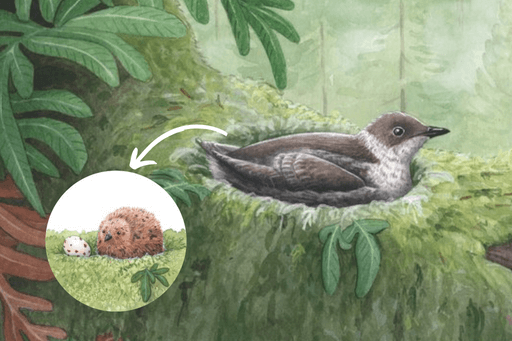
The Marbled Murrelet was one of the U.S. and Canada's last breeding species to reveal its nesting secrets when — in August 1974 — a tree surgeon found a nest with a downy chick 147 feet up in a 200-foot-tall Douglas-fir tree. The discovery showed that this remarkable seabird, which is listed as Endangered by the IUCN and Threatened under the U.S. Endangered Species Act, depends on old-growth forests in the Pacific Northwest. The revelation galvanized forest protection and management efforts to conserve the Marbled Murrelet. More than 160 nests have since been found, the vast majority in trees. Now, with ABC support, conservationists are experimenting with social attraction to see if birds will breed in younger forests.
 | Daniel J. Lebbin is ABC's Vice President of Threatened Species. |





































